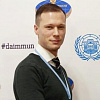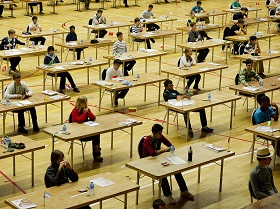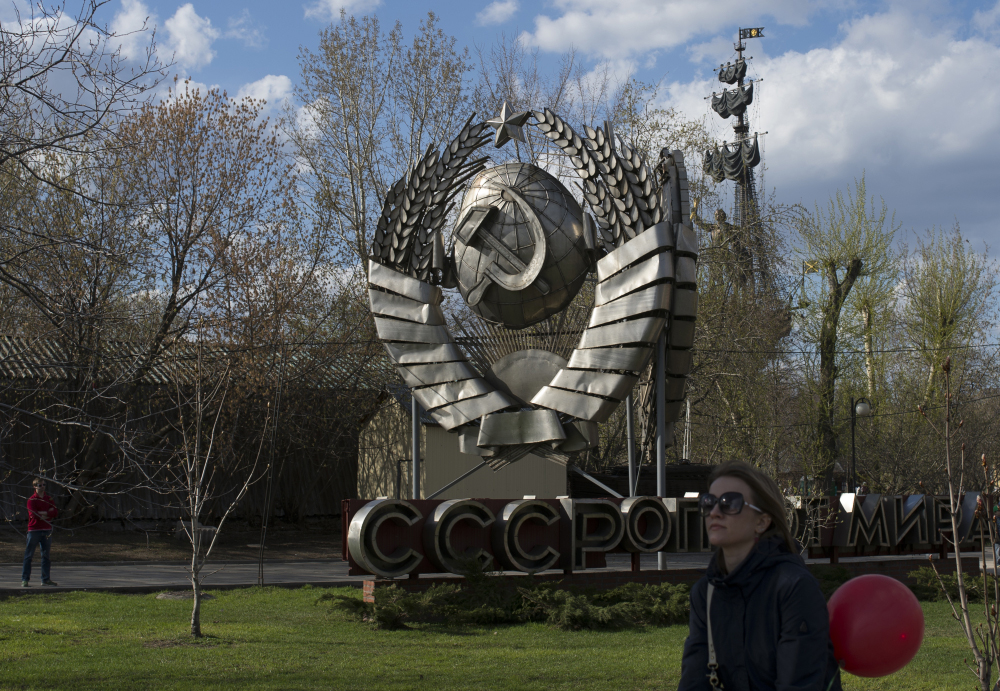It has been just over a decade since “Public Diplomacy 2.0” was proclaimed as the new reality of the increasingly connected global society. However, our ever so globalized world is changing rapidly. In today's mediatized and disintermediated society, individuals no longer need institutions to engage in the connective action of sharing personalized action frames via social networks, as it has now become a way of life. After a brief introduction of the post-modern context, key concepts and theoretical framework, this paper is going to highlight ideas-based public diplomacy as the most efficient public diplomacy component today by using the case study of the recent FIFA World Cup in Russia to illustrate our point. We shall then move on to the wider context of generating positive attitudes among the global publics and uncover other, more potent variables at play. At the end we are going to mention certain recent developments— the phenomenon of social media becoming agents in their own right—and make some recommendations in the light of the current context.
Introduction
The term “public diplomacy” (PD) has been around for several decades now, but its modern conceptualization can be attributed to the models developed by Nicholas J. Cull and Joseph S. Nye Jr. in the late 2000s. (2008, 2008) Over a decade later these frameworks are still relevant today, but the world has been evolving rapidly and we must therefore recognize a number of new developments. Hence, this paper is going to touch upon the relationship between PD and power, as well as ways of measuring the efficiency of PD. We shall explore the case study of the 2018 FIFA World Cup in Russia through the lens of PD in order to demonstrate the best type of PD today. We are then going to broaden our context by uncovering other, more significant variables affecting global admiration that have rendered PD somewhat incomplete and insufficient. Finally, we shall mention Twitter's recent transformation from a digital social medium into an agent in its own right by looking at its recent political involvement and make some final recommendations in regard to generating positive attitudes to one's state in today's world.
Public Diplomacy and Power
First of all, let us outline our conceptual framework by defining all the key concepts and models we are going to be working with. Seeing as public diplomacy is generally seen in the political science discourse as being connected to the concept of power, it may well be a good idea to begin by defining the latter.
We shall speak of “power” as the “ability to affect the behaviour of others to get what one wants.” (Nye 2009: 160) According to Joseph Nye power implies a causal relationship between the power actor and power target, whereby the former seeks to affect the behaviour of the latter by selecting power resources (e.g., culture, military, technology, etc.) to be mobilised and power behaviour (soft or hard) by which the aforementioned resources must be converted into behavioural outcomes in the power target. (Ibid. 2013: 1-2, 2011: 95)
ACTOR: RESOURCES + BEHAVIOUR > TARGET: BEHAVIOURAL OUTCOME
Speaking of power behaviours, they are essentially action modes that define the nature of power as either “soft” or “hard.” (Ibid. 2013: 6) As per Nye's framework, attraction, persuasion and agenda-framing generate soft power (SP), while coercion, threats, payments and sanctions generate hard power (HP). Hence, it is the power behaviour that defines the nature of power (Ibid. 2011: 91-93, 2013: 6). Furthermore, power can only be judged ex-post (by the outcomes) rather than ex-ante (by the resources that may produce the outcomes). (Ibid. 2013: 2-3) Hence, power can only be claimed to exist when the desired outcomes are present once the power activity has taken place.
RESOURCES + HP & SP BEHAVIOUR > DESIRED OUTCOMES
Gradually moving from pure theory to applied theory, the power conversion model that we are interested in for the purpose of our research is the indirect “public diplomacy” model. The reason for the name is the slightly more complex (as opposed to the direct “classic diplomacy”) route whereby power resources combined with SP behaviour are mobilised via various PD agents to generate positive attitudes among the public of the power target state towards the power actor state, thereby creating an enabling environment for the target state's ruling elites to make a decision in favour of the power actor state— i.e. behavioural outcome. (Ibid. 2011: 95, 102-3)
POWER ACTOR STATE'S RULING ELITES: PD ACTIVITY (VIA AGENTS) > POWER TARGET STATE'S PUBLIC: POSITIVE/FAVOURABLE ENVIRONMENT > POWER TARGET STATE'S RULING ELITES: BEHAVIOURAL OUTCOME
Measuring Public Diplomacy
When it comes to measuring the efficiency of PD, however, one must recognize that states tend to employ a combination of SP and HP activities as part of their “smart power” strategy. For this reason, it is difficult to isolate the effects of one from the other. (Ibid. 2009: 160, 2011: 97) With the aforementioned problem of attribution rendering the prospective of proving the effects of various PD activities on the final behavioural outcome difficult, the best we can do to assess the efficiency of a PD activity is to analyze positive attitudes it had generated in the target state's public through the use of public opinion polls, surveys, etc.
A few years ago University of Southern California Center on Public Diplomacy and Portland Consultancy developed the “SoftPower30 Index” (SP30). Their methodology section specifies that SP30 “compares the relative strength of countries' soft power resources” and combines this “objective data” with the “subjective” opinion polls conducted in 25 different countries, covering more or less proportionally every continent on the globe. (SoftPower30 2020) As we have already established, power must be measured ex-post, not ex-ante, and it is the behaviour modes rather than the resources that define the “soft” or “hard” nature of power; hence, their “objective data” on “SP resources” probably measures the SP potential in their own understanding of it. Nevertheless, their public opinion poll data, which fortunately can be viewed separately from the overall ranking, is a very useful tool for our framework as it measures the positive attitudes, which is the best indicator of PD's efficiency today.
Ideas-Based Public Diplomacy
As far as PD taxonomy is concerned, Nicholas Cull's comprehensive framework helpfully breaks it down into: listening; advocacy; cultural diplomacy; exchange diplomacy; international broadcasting; and PD-by-deed (e.g., humanitarian relief work). (2008: 32-6) While the aforementioned types tend to be to a greater or lesser extent controlled by the ruling elites, whether explicitly or implicitly, there is also another type of PD, which was first identified by Cull over ten years ago. It is the ideas-based PD, whereby an idea is cut off from its source of origin and “becomes a meme (an idea, behaviour, style or usage that spreads from person to person within a culture).” (2008: 49) These memes essentially form the basis for decentralized connective action as personalized content shared across media networks by individuals. (Bennett & Segerberg 2012: 739) We argue that this ideas-based PD is the best type of PD strategy in today's context and here is why.
First of all, our society has become “submitted to… [and] dependent on the media and their logic' with the media becoming the primary medium of social interaction, as per Stig Hjarvard's mediatization theory. (2008: 113) Second, while media agenda setting may have become “concentrated in a few global transnational media conglomerates” (Castells 2009) and is still dominated by television (Media Landscapes 2020), people have nevertheless increasingly come to produce and consume content directly, outside of institutions, via social media, which is something that came to be known as disintermediation. (Schroeder 2018: 3) As a result, not only did individuals come to have the opportunity to become PD agents in their own right in the wake of PD 2.0, over the past decade the modality of this phenomenon has transformed from ability to obligation, whereby most of the people with internet-enabled devices automatically share any unique experience they may find themselves immersed in, often through their own personalized frames, enabled by social media features, as per modern rules of social interaction.
Case study: FIFA 2018 World Cup in Russia and Ideas-based PD
Having established our conceptual and theoretical frameworks, let us now turn to our real-world case study. According to SP30 polling data, the Russian Federation received its highest score ever in 2018, the same year they were hosting the 21st FIFA World Cup. The other major Russia-related news headlines that year were predominantly negative (e.g., Skripal poisoning, AN-148 plane crash, Zimnyaya Vishnya tragedy, pension reform protests, school shooting in Crimea, and Kerch Strait incident, etc.). The few positive news items (e.g., European Figure Skating Championship, Junior Hockey World Cup, World Rapid Chess Championship, etc.) were not as widely publicized and therefore unlikely to have caused any major positive shifts in global public opinion on Russia. Moreover, there have not been any major leaps in any of Moscow's traditional PD strategies, with the listening component still by and large absent, advocacy strategies unchanged, cultural diplomacy stuck on “balalaikas,” exchange diplomacy at a low level, RT and Sputnik remaining marginal players in the realm of international broadcasting and most of Russia's “PD-by-deed” activities unknown to the global audience. (Primakov 2019, Reid 2020a & 2020b, Velikaya & Simons 2020) Hence, one can state with a certain degree of confidence that it was indeed the World Cup that generated the highest ever number of positive attitudes toward Russia that year, through ideas-based PD.
To illustrate our point, a study by Mikhailov & Partners (2018) has revealed that from the beginning of 2018 until the end of the World Cup in mid-July a total of 250,000 non-Russian social media users made 388,988 posts about Russia & Russians, which generated 24 million likes, shares and comments, with 50% of them having been made during the World Cup (14th June – 15th July 2018). Most of these came from social media users from the U.S., UK, India, Canada, Germany, France, Australia and Brazil. According to another study, most of these countries had rather negative views on Russia. (Ipsos 2018) Nevertheless, in spite of the strong anti-Russian media campaign unraveling in the West following the Skripal incident, there was an organic increase of positive reviews of Russia on social media during the course of the World Cup, with the top positive themes revolving around the “hospitality of the Russians,” “good organization” and “dispelling myths” about Russia. Moreover, any negative comments were generally focused around the criticism of domestic use of the event “as a means of propaganda and distraction for the society.” Yet even those negative remarks were still by and large complimentary in regard to the friendliness of the people and featured heavily the words “love,” “rocks,” “amazing,” “admire,” “excited,” and “delight.” (Mikhailov & Partners 2018)
What this means is that, besides the “good organization,” which the state can be credited with, the chief PD agents were the individuals - the Russian people, who were “delivering” their hospitality and friendliness to the visitors via attraction and framing, and the visitors themselves, who, apart from being the consumers, went on to be the producers of ideas by adopting, framing and “delivering” their experiences to the audiences in their home countries via social media, enabled by the state's organization (e.g. fan ID, free travel, free WiFi, etc.).
The case study demonstrates how ideas-based PD may well be the most efficient PD strategy in today's world, where the public is often highly suspicious of authorities and credibility often rests with everyday individuals. The best result is achieved when state agencies act as mere facilitators of the conditions for ideas-based PD—first and foremost, easily-personalized action frames—while individuals are given the freedom to engage in connective action, subsequently generating positive attitudes towards the power actor state among their home audiences.
Of course, it is understandable that Russia cannot host events of such magnitude every year, not only due to their high cost but also due to competition from other states. Nevertheless, provided that Moscow has carried out some listening PD activities (e.g., surveys to generate detailed data sets on which experiences had generated the most positive frames among which types of individuals, along with the criteria of nationality, age, sex, etc.), they should be able to instrumentalize this information in their PD activities, both online and offline (post-COVID).
The Wider Context
We have now demonstrated how the ideas-based PD during the aforementioned World Cup has manifested as the Russian Federation's greatest PD success in recent years. However, if we are being honest, we must acknowledge that the success was rather relative in the grand scheme of things, as Russia remained at the bottom of SP30 (SoftPower30 2020). It may therefore be a good idea to consider which countries scored higher than Russia in 2018.
The same year Russia hosted one of the world's biggest sporting events, it was, in fact, Italy that the majority of the public polled across the world had the most positive attitudes towards. However, Italy did not host any major sporting events that year and their 2018 was hardly any merrier that of Russia's, as the biggest news to come out of Bel Paese that year were those of inter-ethnic conflicts between locals and migrants, election victory of the center-right coalition, Interior Minister Matteo Salvini's initiatives to close ports to migrant boats and deport illegal Romani people, and 43 people in Genoa being killed by a collapsed Morandi Bridge. Nevertheless, the following year Italy remained the public's favorite, despite the contentious initiative to open Benito Mussolini's crypt as a tourist attraction. France moved up to the third spot, even though the clashes between the police and the “yellow vests” intensified and became marred with brutality and violence. Moreover, having arrested the world's most known freedom of speech activist and journalist, Julian Assange, Britain remained in the top 10, earning almost double the public appreciation points as Russia. (SoftPower30 2020)
Furthermore, if we are to look at the top 15 states for every year when SP30 data was collected, we may notice the same countries shuffling ever so slightly, all of which are, from a liberal perspective, liberal democracies, or, from a realist perspective, the United States, the global hegemon and home to most of the world's largest media conglomerates, and its allies or client states.
2020 and Beyond
Looking ahead, we must briefly mention one other recent development. With the primary mass agenda-setting medium, television, having long seized to provide diverse coverage of key political issues, its biggest competitor, digital social media, has been the bastion for alternative information sharing and ideas-based PD. However, Twitter's recent campaign of subjective labeling of “government-affiliated” accounts (e.g., placing the mark on RT but not VoA, etc.) and the US presidential election interference (e.g., hiding tweets of one of the main candidates, among other things) have revealed a new reality, whereby social media are no longer mere communication channels, but rather they are becoming agents in their own right. This is the new reality that has to be recognized and taken on board when devising new PD strategies.
Conclusion
It can be concluded that in today's mediatized and increasingly disintermediated world ideas-based PD, channeled via connective action, is, indeed, the most efficient kind of PD, and, provided that the state agrees to play a passive facilitator role leaving the individuals to share their personalized frames via social media, it will add value and generate more positive attitudes among the foreign publics. However, it remains insignificant in the grand scheme of things and for a state to top the list of the most attractive countries, it must also either become one of the global hegemon's liberal democratic allies/client states or try to rival the hegemon by coming to own a number of major global media conglomerates. Finally, due to the recent development of increasingly influential social media taking on the features of traditional media, such as partiality and subjectivity, and thus transforming from an independent fair play platform into an agent in its own right, any state seeking the admiration of the global public needs to own not only major traditional media conglomerates but also the biggest digital social media companies - “the post, telephone and telegraph” of today.
References
Bennett, W. Lance, Segerberg, Alexandra. 2012. “The Logic of Connective Action,” Information, Communication & Society, 15:5, pp. 739-768.
Castells, Manuel. 2009. Communication Power. Oxford: Oxford University Press.
Cull, Nicholas J. 2008. Public Diplomacy: Taxonomies and Histories, ANNALS/AAPSS, 616, pp. 31-54.
Ipsos. 2018. “Global attitudes towards the World Cup 2018 in Russia.” https://www.ipsos.com/ipsos-mori/en-uk/global-attitudes-towards-world-cup-2018-russia
Media Landscapes. 2020. https://medialandscapes.org/
Mikhaylov & Partners, 2018. “Mneniya rossiyan i inostrannyh bolyel'schikov.” https://m-p.ru/news/mihajlov-i-partnjory-uznali-mnenie-rossijan-i-inostrannyh-bolelschikov-o-chempionate-mira-2018/
Nye, Joseph. 2008. Public Diplomacy & Soft Power. ANNALS/AAPSS, 616, pp. 94-109.
Nye, Joseph. 2009. “Get Smart: Combining Hard and Soft Power.” Foreign Affairs, Vol. 88, No. 4 (July/August 2009): pp 160–163.
Nye, Joseph. 2011. Future of Power. New York: Public Affairs.
Nye, Joseph. 2013. “Russia and Central Asia.” In The Oxford Handbook of Modern Diplomacy, edited by Andrew F. Cooper, Jorge Heine, and Ramesh Thakur, 1–17. Oxford: Oxford University Press.
O'Reilly, Lara. 2016. Top 30 biggest companies in the world. Business Insider. https://www.businessinsider.com/the-30-biggest-media-owners-in-the-world-2016-5
Primakov, Yevgeniy. 2019. “Hvatit nam balalayek v gumanitarnoy politike.” Novye Izvestiya. https://newizv.ru/article/general/08-04-2019/evgeniy-primakov-hvatit-nam-balalaek-v-gumanitarnoy-politike
Reid, Ernest A. 2020a. “Moscow's public diplomacy and Rusophilia in Serbia 2012–2019.” FPN Godišnjak, vol. 23 (June 2020): pp 119-140. http://www.fpn.bg.ac.rs/wp-content/uploads/FPN-Godisnjak-23-2020.pdf
Reid, Ernest A. 2020b. “Third Rome or Potemkin village: Analyzing the extent of Russia's power in Serbia, 2012–2019.” Nationalities Papers, pp. 1-10, doi:10.1017/nps.2020.62
Schroeder, Ralph. 2018. Social Theory after the Internet. London: UCL Press
SoftPower30. 2020. https://softpower30.com/
Velikaya, Anna & Simons, Greg. 2020. Russia’s Public Diplomacy: Evolution and Practice. London: Palgrave Macmillan








